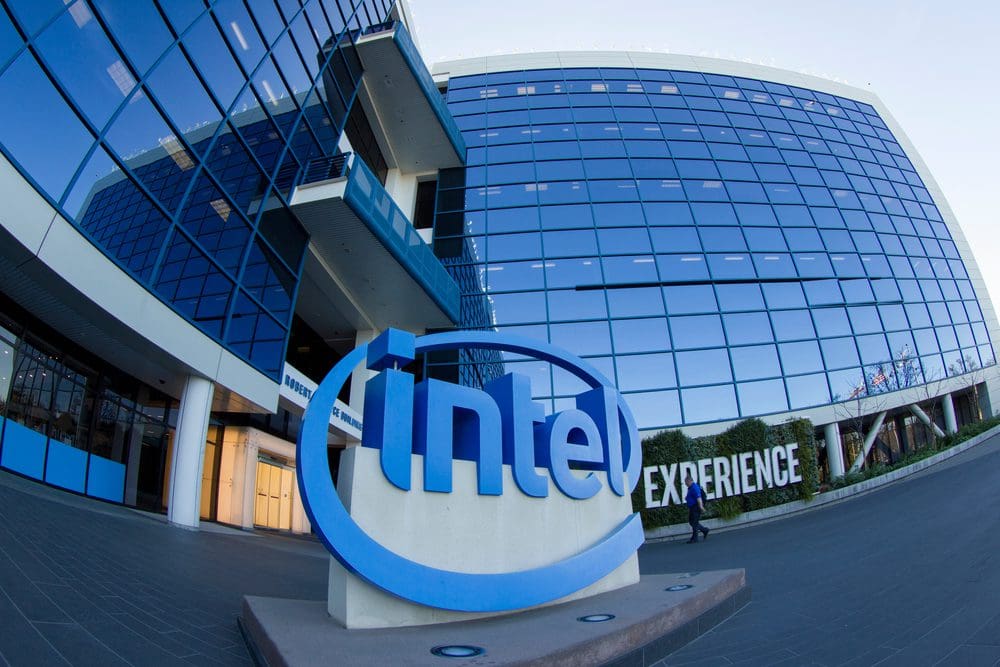The technology which drives our mobile devices, laptops and wider Internet of Things has, for many years now, been dominated by the big players.
Powered forward by the likes of technology companies AMD, Intel, Apple and Arm, the processors upon which our connected lives depend have been cornered by the proprietary technology they developed or piggy back on.
But there has been a shift in chip design which could usher in a new breed of companies looking to muscle in on the sector.
They may not be about to take over as the dominant players – at least not yet – but a small slice of a huge global market could deliver significant returns for investors.
Introduction of ‘Risk 5’
The reason for this shift? The introduction of what is known as RISC-V – pronounced ‘Risk 5’.

In simple terms, RISC-V is a type of ‘instruction set’ for computer processors. Think of it as a set of rules that tells a processor how to perform different tasks and operations. And it’s created considerable excitement in the processor market.
RISC-V stands for ‘Reduced Instruction Set Computer (Risc) – Five’. The ‘Reduced Instruction Set’ part means that it follows a simpler and more streamlined approach compared to some other instruction sets. This simplicity of the chip architecture makes it easier to design and customise processors.
The ‘Five’ in RISC-V refers to different versions or ‘levels’ of the instruction set. These levels provide increasing capabilities and features, allowing processors based on RISC-V to handle a wide range of tasks—from small, low-power devices like smartphones and smartwatches to powerful computers and servers.
What makes RISC-V special is that it is an open-source instruction set architecture. This means that anyone can freely access and use it without any restrictions.
It promotes collaboration, innovation, and customisation. It’s like having an open recipe book for processors, where anyone can contribute their ideas and create their own versions.
In short, it enables greater flexibility and openness in processor chip design and could see it in everything from mobile devices to supercomputers.
It also provides a competitor to Intel’s x86 microprocessors which have so long dominated.
Writing in Forbes, Karl Freund, founder and principal analyst at Cambrian-AI Research, said: “The rise of RISC-V as a viable and flexible technology is undeniably helped by the open-source platform’s excellent fit as the CPU in a multi-chiplet architecture enabling innovation without the limiting constraints of Arm licensing terms.”
And that opportunity is being grasped by a growing number of startups keen to capitalise on the potential it offers.
The Growing Potential and Market for RISC-V
In a report published at the end of last year by BCC Research, it estimates the global market will be worth USD2.7 billion by 2027 with a CAGR of 33.1%. Little wonder, then, investors are sitting up and taking notice of an ever increasing number of Risc V startups.
While RISC-V has gained popularity and is used in many products, it’s not currently on par with the market leaders like AMD and Intel for general-purpose desktop and server processors.
However, it has the potential to challenge proprietary architectures in specific areas where customisation and openness are highly valued, such as in specialised devices and niche markets.
RISC-V Innovators
RISC-V International is the global open standards organisation representing the industry.
In December, at the global RISC-V Summit in California, it said it had seen a 26% membership growth year-over-year, with over 3,180 members across 70 countries. It added there were more than 10 billion RISC-V cores in the market, and tens of thousands of engineers working on RISC-V initiatives globally.
Calista Redmond, RISC-V International CEO, said: “Our vision for 2022 was to bring RISC-V everywhere, and that has really come to fruition with RISC-V adoption and development in everything from automotive to aerospace to the data centre, as well as consumer devices.
“There are already billions of RISC-V cores in the market with this groundswell, and we expect to see billions more in 2023 as companies and countries around the world embrace RISC-V.”
Among those companies looking to capitalise on the growth is SiFive. It was the first company to produce a chip that implements the RISC-V.
A number of funding rounds has seen it raise more than USD350 million investment – the latest round of which put the company’s valuation at more than USD2.5 billion.
Patrick Little, CEO and chairman at SiFive. “With the fast-paced growth of SiFive and rapidly increasing demand for our products, and the overall growth of the RISC-V ecosystem, as we’ve said before, the future of RISC-V ‘has no limits’ as we take the company to new heights.”
California-based Ventana Micro Systems is specialising in high-performance RISC-V processors.
Earlier this year it received the Most Influential Founding Team award at Data Center World – a globally recognised data centre conference.
Over three funding rounds, it has raised just under USD100 million.
US firm Rivos describes itself as a startup in stealth mode. Last year it raised USD125 million in a Series A raise.
It is gathering a powerful leadership team which is said to include former CPU engineers at Apple. Those close to the sector say it is one of the firms to watch in the future as it seeks to position itself as a high-performance RISC-V player.
Taiwan headquartered Andes Technology has been a driving force in taking RISC-V into the mainstream. The publicly-traded company believes its potential has yet to be tapped into.
It explains:
“RISC-V is revolutionising the future of Artificial Intelligence (AI) in industries such as automotive, data centres, communications, and IoT (Internet of Things). Its open-source instruction set architecture (ISA) provides higher performance, lower power, and compact silicon footprint; features highly desired by these industry segments. RISC-V has gained rapid widespread adoption due to its compact instruction set and extensibility.”
And while the likes of Intel and AMD may not be quaking in their boots just yet, they too can see the potential.

Intel recently unveiled a USD1 billion innovation fund to support emerging companies – among them those offerings that will strengthen the ecosystem around the RISC-V architecture.
Bob Brennan at Intel Foundry Services is heading up its RISC V division. The Intel capital is unlikely to be invested in the hope of undermining its only developer platform, but complement it.
Intel, home of the x86, has also worked alongside a number of the major RISC-V players – among them Esperanto Technologies which is using RISC-V at the heart of its high-performance computing systems for AI and non-AI applications.
The California-based firm has already raised close to USD125 million.
Conclusion
There is no denying that in a relatively short amount of time, RISC-V has gone from the underground into becoming one of the significant developments in a world so reliant on power and connectivity. The sheer speed at which it is being adopted suggests investors looking to take the plunge should do so sooner rather than later to ensure they capitalise on the growth which is predicted over the coming years. As with all investments, however, ensure you do your due diligence.
Companies to Watch
SiFive, Rivos, Ventana Micro Systems, Esperanto Technologies, Andes Technology








